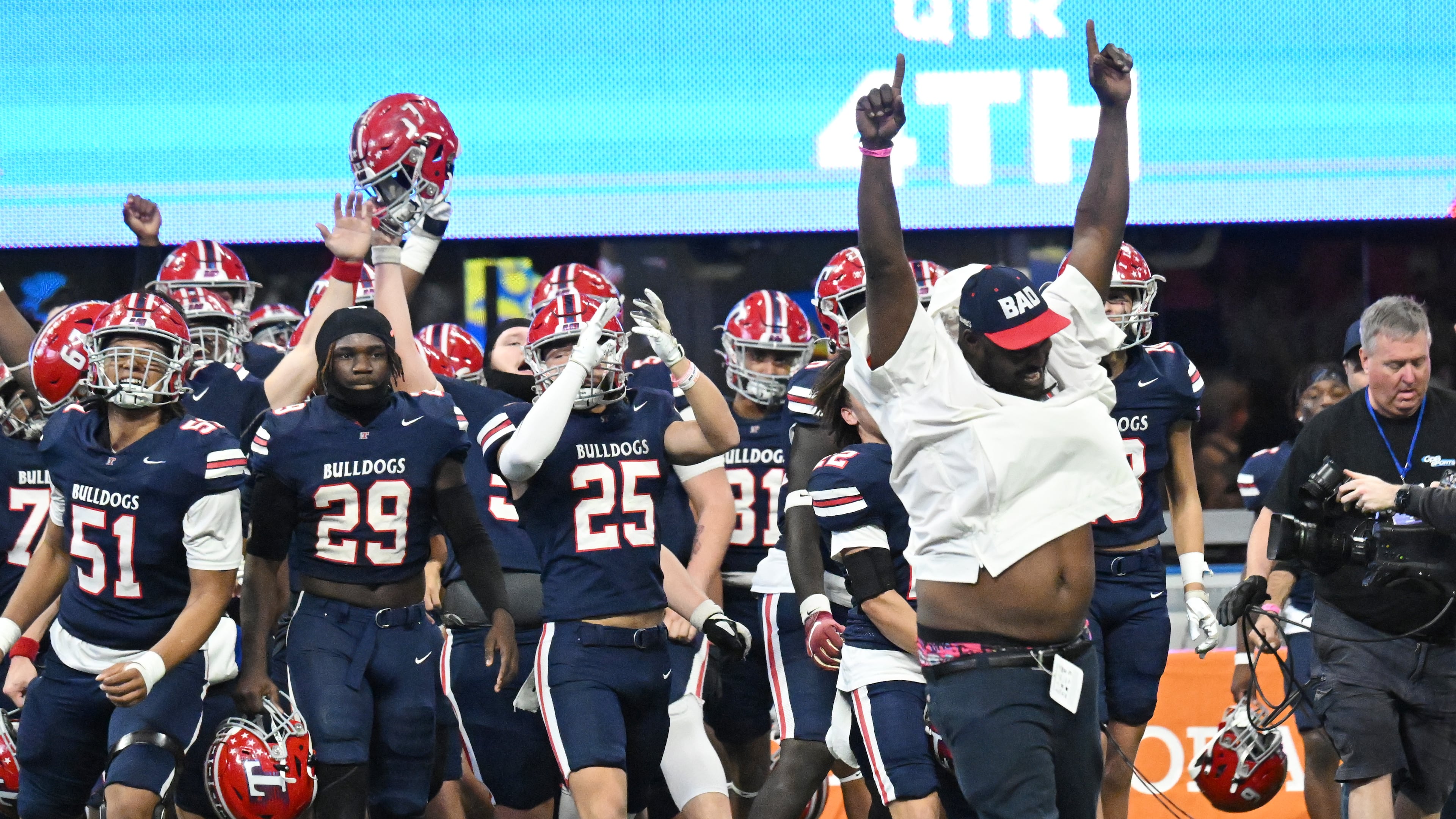GHSA smart to change playoff format, but missed chance to do even more

Laudably, the Georgia High School Association on Monday approved a seismic change in its state-tournament format, a move made to ensure the most deserving teams will compete for state championships in its seven classifications.
Starting in the 2026-27 academic year, the GHSA will rely on a power-ranking formula to determine each classification’s 32-team playoff field in football, basketball and any sport that uses a bracket-based postseason. It will relegate to history the longstanding model of granting berths to the top four teams in all eight regions in each class.
Further, whereas the current bracket format for the larger classifications arranges teams by region finish, which has sometimes meant that top-10 matchups have taken place in tournaments’ early rounds, the new model also will seed the 32-team brackets, as is done already in smaller classifications.
“I really believe that our organization, we would like to make sure that the best teams get the opportunity to play for (the state championship),” GHSA executive director Tim Scott told The Atlanta Journal-Constitution. “The best eight are in the elite eight, the best four are in the final four. The best two are in the championship.”
However, the change is even more reason for dismay for another GHSA decision earlier this year, one that shelved another proposal that would have similarly created a more equitable and competitive structure for the state’s high school athletes.
In June, the reclassification committee voted to table the discussion of a competitive-balance model, in which the five highest-performing athletics programs in each classification would move up to the next highest classification and the bottom five would move down to the next lowest. The GHSA’s classifications have long been sorted by enrollment size.
More than half the state high school athletics associations in the country have adopted a form of competitive balance. The thumbs-down decision continues to frustrate the model’s creator, Gainesville High athletic director Adam Lindsey.
“I think competitive balance is absolutely the most fair way to deal with it,” Lindsey told the AJC on Tuesday. “It takes the schools that are not competitive and allows them to drop down and have the opportunity to find a place to be competitive, and it takes the schools that are ultracompetitive, that are dominating their classification year in and year out, to be put up in a place where they can be with more like schools.”
It doesn’t take more than a few minutes of listening to Lindsey to recognize his belief in and even passion for the concept. He had been trying to advance it within the GHSA for at least nine years, collecting data that demonstrates that enrollment size does not determine a school’s athletic success as much as some might believe.
He is firm in his belief that an athletics program sets the tone for a school, and that schools with consistently losing teams (and corresponding low participation rates) perform worse academically, have lower attendance rates and more disciplinary issues.
“A school that can’t even make the playoffs or anything is in a region with a Buford or a Marist (two all-sports powerhouses), and they’ve got to play those teams,” Lindsey said. “It’s just unfair for those kids.”
Esteemed colleague Todd Holcomb tabulated a statistic that speaks to the lack of balance even within regions, groups of schools sharing similar enrollments and location. In the 2024 football season, of the 1,300 region games, 40% were decided by 30 points or more.
The GHSA’s decision Monday served to ensure the right teams are in the state tournament. The competitive-balance model goes back a step to ensure teams are in classifications where either the deck isn’t stacked in their favor or they have a fighting chance.
Who wouldn’t want that?
It should be pointed out that the GHSA is establishing criteria that will make it easier for schools that perform poorly at the state level in their classification to move down. But that’s only the easy part of the solution. The Goliaths at the top are still there to clean up on the remaining teams.
“When you look at the data and you see that there are schools that will win eight to 10 state championships every year, they’re not being challenged,” Lindsey said.
Lindsey asserted that it’s administrators at those schools who got in the way of the proposal.
“The GHSA office makes no bones about it — they believe competitive balance is the right way to go,” he said. “But it’s the member-led leadership that is fighting it. And if you go back and look at where those people are at in their classifications, they’re (at schools) at the top. They know if competitive balance were to pass, then they would be pushed up into a higher classification, would have to be compete at a higher level. So they’re doing everything they can to keep that from happening.”
It’s worth noting there also was pushback from small-classification public schools. The competitive-balance proposal would have brought back the smaller-classification private schools into state playoffs alongside the accompanying public schools. The smaller private schools have competed in their own state tournaments since 2024-25. Many public schools in those classes were not eager to compete for trophies with private schools, which often have advantages in resources and in not having districting restrictions.
But it’s also worth pointing out that private schools have largely supported the competitive-balance plan and would be willing to move up in classification if merited.
One policy change to create a fairer playoff system for the state’s high school athletes is progress.
But two would have been better.


